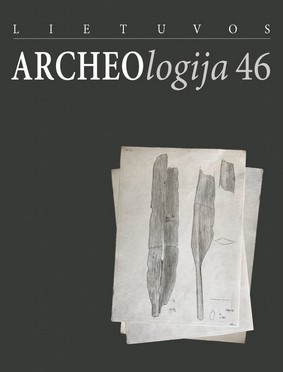EIGULIAI, ONE OF RIMUTĖ RIMANTIENĖ’S FIRST EXCAVATIONS – A REVISED INTERPRETATION
EIGULIAI, ONE OF RIMUTĖ RIMANTIENĖ’S FIRST EXCAVATIONS – A REVISED INTERPRETATION
Author(s): GABRIELĖ GUDAITIENĖSubject(s): Archaeology, Cultural history, Environmental Geography, Environmental interactions, Post-War period (1950 - 1989)
Published by: Lietuvos istorijos institutas
Keywords: Rimutė Rimantienė; Final Palaeolithic; Swiderian; Brommean;
Summary/Abstract: The Final Palaeolithic site at Eiguliai in Central Lithuania, was monitored by Konstantinas Jablonskis and his daughter, Rimutė Jablonskytė (Rimantienė), when she was already in her teens. By the late 1940s, the site had been partly destroyed, but not before yielding many surface finds. She, therefore, decided to obtain as much archaeological data as possible. Rimantienė’s excavations at the Eiguliai 1 site became one of the very first investigations of her career. The collected lithic assemblage suddenly became a reference in researching Swiderian culture sites. The Eiguliai site was well known to scientists from the Eastern Baltic countries as well as to colleagues in Western Europe. As time passed and new excavation methods appeared, the site, which had been recorded only by several pictures and trench plans and where most of the material had been collected from the sandy surface, came to be regarded as not informative enough and ceded its importance to other newly discovered Swiderian sites. However, during the past five years, with the help of consultations with Rimantienė, the archaeological data from Eiguliai was reviewed and the discussion resumed. The aim of this publication is to present the entire lithic collection of morphological tools ascribed to the earliest stage of the site’s occupation, along with some new insights into the archaeological data from Eiguliai. The site is considered to have been a place that was visited multiple times for hunting purposes. While the Swiderian culture assemblage predominates, the possibility of discussing an even earlier visit pre-dating the Swiderian culture is considered. Various remains of archaeological features once recorded at the site are reviewed and their interpretation is clarified: there are probably only a few features that could be ascribed to the Stone Age, contrary to what had been previously proposed. An analysis of the lithic assemblage has shown that people had probably brought flint material to the site, but did not stay there for long, and made quick decisions when tools needed to be produced.
Journal: Lietuvos archeologija
- Issue Year: 2020
- Issue No: 46
- Page Range: 33-63
- Page Count: 31
- Language: English

